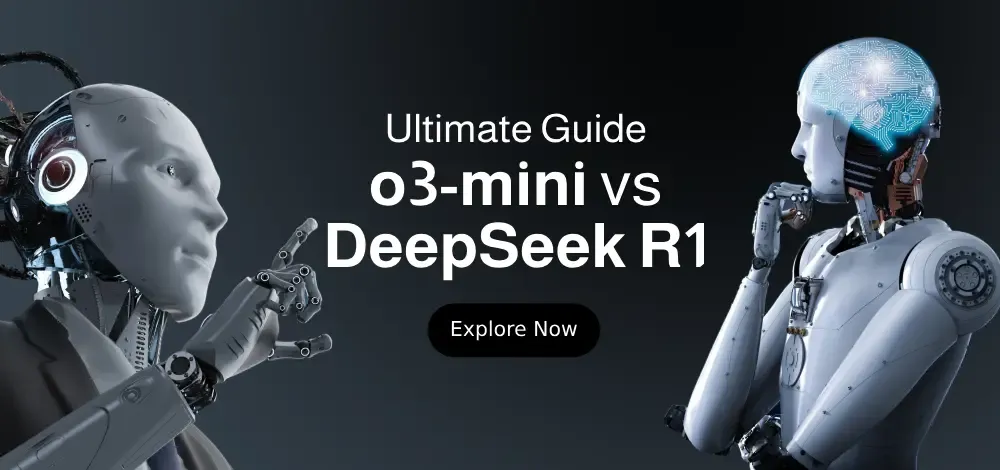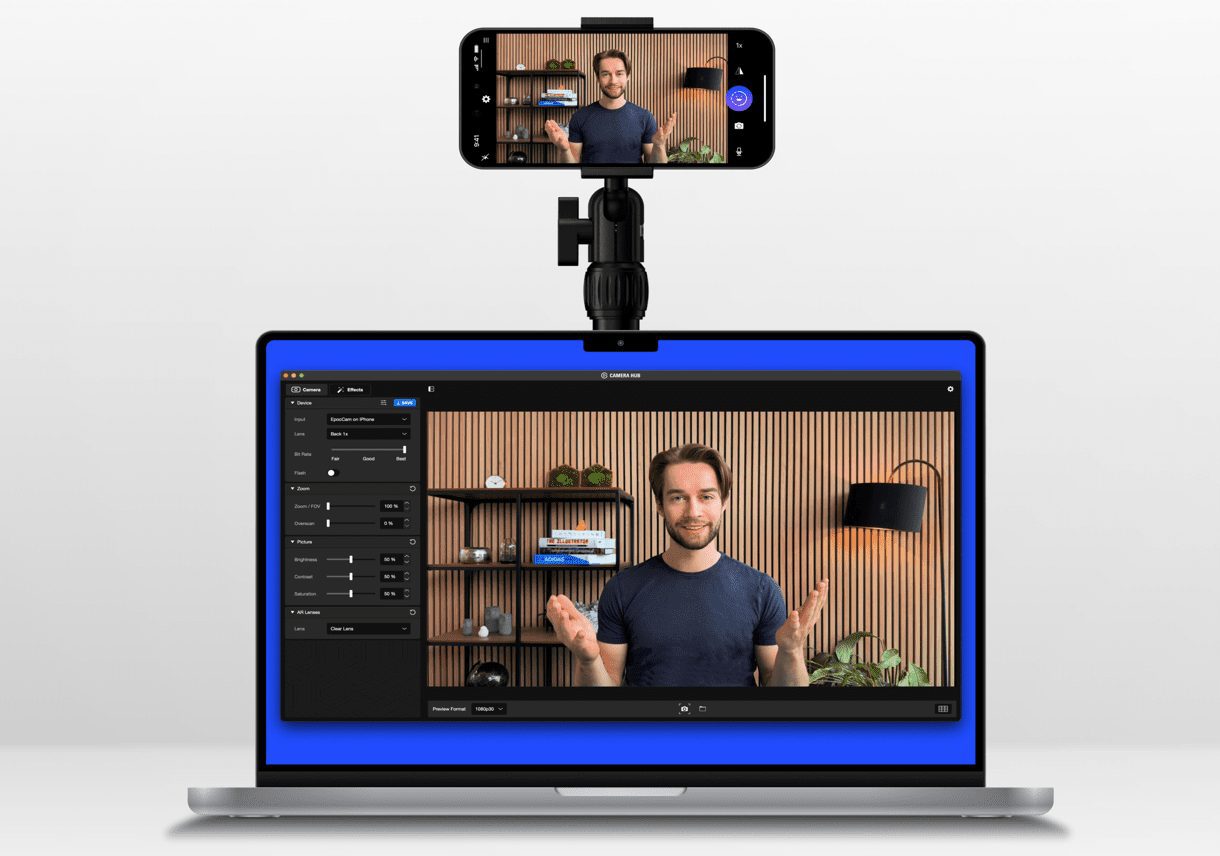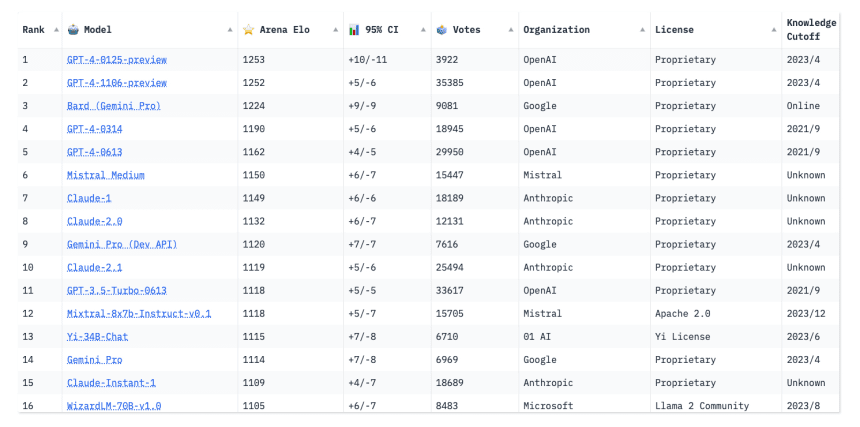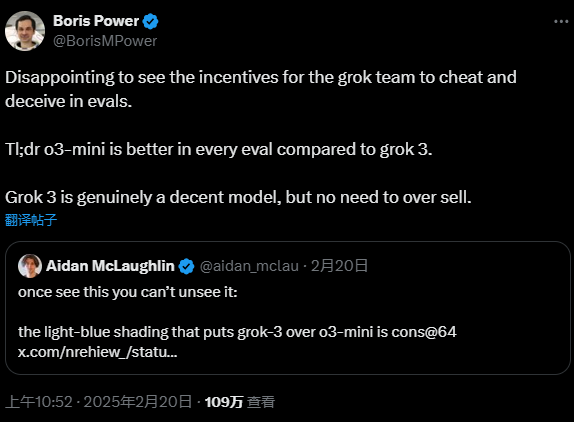DeepSeek R1 vs o3-mini: who is the most cost-effective inference model for 2025?
OpenAI o3-mini together with DeepSeek R1: An in-depth comparison of advanced AI inference models to understand the key differences between the two main inference models.
In the ever-changing field of artificial intelligence (AI) technology, inference models have become the focal point of technological innovation. openAI's o3-mini is the first of its kind in the world to be used in a new technology. DeepSeek R1 (emphasizes that sth. is precisely or exactly as stated) this trend Two outstanding models have emerged. Both are dedicated to solving complex problems, overcoming programming challenges, and tackling scientific tasks, but they show significant differences in design philosophy, performance, cost structure, and path to realization.
This article aims to provide an in-depth analysis of the key differences between OpenAI o3-mini and DeepSeek R1 in a professional and concise language. The article will scrutinize comparisons The architectural design, performance benchmarks, pricing strategies, and typical application scenarios of the two models seek to provide the reader with the objective analysis, thus assisting readers to make decisions based on their needs optimal Select.

OpenAI o3-mini with DeepSeek R1
OpenAI o3-mini Overview
OpenAI's o3-mini, to be released in early 2025, is an important part of its strategy to continue refining its efficient and accurate inference models. o3-mini will be released in early 2025 through the ChatGPT The community offers access to o3-mini to users, including free users with limited access, as well as higher-priority Plus, Team, and Pro subscribers. Comment: It's a bit hollow to characterize tech companies' technology iterations as "continuous efforts" when they're actually regular upgrades driven by market competition. The core strength of o3-mini is its ability to handle a wide range of tasks quickly and accurately, with particular expertise in logical reasoning, code generation, and problem solving in STEM subjects.
Key features of the o3-mini
- Advanced Reasoning Skills. o3-mini is designed to mimic the cognitive process of "step-by-step thinking", enabling it to break down complex problems into more manageable sub-problems, thus improving the efficiency and accuracy of problem solving. Comment: Although "step-by-step thinking" is an anthropomorphic description, it is actually an algorithmic technique, and should not be over-interpreted to mean that AI has human-like thinking.
- Rapid response time. Benchmarks show that the o3-mini is able to provide answers to tasks such as coding and math puzzles in a matter of seconds, demonstrating exceptional responsiveness.
- Dense Transformer Architecture. o3-mini uses intensive Transformer architecture, each input Token are handled by the full set of model parameters, ensuring that the model remains in a variety of tasks settled Performance.
- Excellence in Coding and STEM. o3-mini has proven to be excellent in code generation, logic puzzle solving, and science-related query processing, especially in the STEM domain, where it shows strong potential for application.
- Deeply integrated in ChatGPT. The o3-mini model is the core driver of the ChatGPT API and advanced features of the web interface, which provides solid technical support for the intelligent application of ChatGPT.
Pricing of o3-mini
Based on the latest comparative market data, the o3-mini is priced roughly as follows:
- 1.10$ per million input tokens
- 4.40 USD per million output tokens
Priced in Token, o3-mini's pricing compares favorably to some of the competition Slightly higher, but with its excellent speed and accuracy, the many cases arrive at (a decision, conclusion etc) prove The reasonableness of this cost. Comment: The phrase "usually justifies the cost" is slightly subjective, and the price factor remains critical for budget-sensitive users.
DeepSeek R1 Overview
Publishing and Design Goals
DeepSeek R1 is developed by Chinese AI startup DeepSeek, founded by Wenfeng Liang.DeepSeek R1 was officially released in January 2025, and right now It is notable for its ability to achieve competitive cost control while ensuring advanced reasoning capabilities. What's more, DeepSeek R1 has opted for an open source model, which means that developers are free to access and modify its source code for various kinds Individualized needs. Comment: The DeepSeek R1's "very low-cost" selling point may suggest that it has made some trade-offs in terms of performance, and that the rule of "cheap is not good enough" also applies in the tech sector.
Key Features of DeepSeek R1
- Open Source Features. The open source design of DeepSeek R1 makes its code available for anyone to download and integrate, and this high level of transparency is important for the Open Source Concept Supporters is certainly of great appeal to the developers of the
- Excellent cost-effectiveness. DeepSeek R1 in design prioritize think over Efficiency. Thanks to the Mixture-of-Experts (MoE) architecture, DeepSeek R1 consumes fewer computational resources at runtime, which significantly reduces operational costs.
- Chain-of-Thought Visualization. Unlike the implicit inference process of o3-mini, DeepSeek R1 typically in detail Presentation of the reasoning steps. Some users found this "visible Chain-of-Thought" to be helpful in gaining a deeper understanding of the internal logic of the model's conclusions. Comment: "Visible Chain-of-Thought" may seem like a strength of DeepSeek R1, but the overly detailed reasoning process may be redundant or even confusing for users.
- Mixture-of-Experts Architecture. DeepSeek R1 utilizes the MoE architecture, where the model activates only some of the parameters (i.e., "experts") for each token. This design strategy allows DeepSeek R1 to exhibit higher efficiency when dealing with large-scale tasks.
- Focus on Efficiency. Architectural Design of DeepSeek R1 fundamentally Focused on reducing the cost of training and reasoning to a budgeted restricted The advantages are obvious in application scenarios.
Pricing for the DeepSeek R1
DeepSeek R1 compared to OpenAI o3-mini in terms of token cost statistically significant Lowering:
- Approx. $0.14 per million input tokens (cache hit), with a slight price increase when the cache is not hit.
- Approximately $2.19 per million Token output.
Technical Architecture Comparison
Architectural Design of AI Models straightforward affects its performance, cost and operational efficiency. The following table well Compares the key architectural features of OpenAI o3-mini with DeepSeek R1.
Architecture and Pricing Comparison
| hallmark | OpenAI o3-mini | DeepSeek R1 |
|---|---|---|
| Architecture Type | Dense Transformer | Mixture-of-Experts (MoE) |
| Per Token Parameters | Fully intensive processing (all parameters active) | Partial activation (e.g., only 2 out of 16 experts activated) |
| context window | Up to 200K Token (depending on the specific use case) | Typical value is 128K Token |
| transparency | Proprietary (closed source) | Open source; code and training details publicly available |
| Input Token Cost | ~$1.10 per million tokens | ~$0.14 (cache hits)/slightly higher on misses |
| Output Token Cost | ~$4.40 per million Token | ~$2.19 per million Token |
| use case | Coding, Logical Reasoning, STEM Problem Solving | Efficient reasoning, cost-effective tasks |
Real-world performance benchmarks
in order to objectively Evaluating the real-world performance of the two models, the researchers performed on a number of typical tasks such as coding, logical reasoning, and STEM problem solving comprehensive Testing. The following is a summary and analysis of the key performance indicators.
coding task
In the comparative reviews in this section, the researchers presented the OpenAI o3-mini with the DeepSeek R1 model at the same time as the preferences The same coding tasks were performed with the aim of examining the performance differences between the two models in terms of code generation. The evaluation focused on the time consuming code generation as well as the accuracy of the code.
- OpenAI o3-mini.
- Code generation is extremely fast (e.g., a JavaScript animation task takes about 27 seconds to complete).
- The code generated is well structured, well organized, and responds accurately to task requirements.
- DeepSeek R1.
- Code generation takes relatively long (about 1 minute 45 seconds for the same JavaScript animation task).
- While DeepSeek R1 is able to provide thorough code explanations, the responses it generates sometimes contain additional details or features not explicitly requested by the user, which may appear redundant in some scenarios. COMMENTARY: DeepSeek R1 is slow on coding tasks and may produce redundant information, suggesting that it may not be as practical as o3-mini for code generation.
logical inference
- OpenAI o3-mini.
- Ability to provide a step-by-step reasoning process and effective validation of the conclusions it derives.
- The answers are of high quality and the explanations are succinct.
- DeepSeek R1.
- Presenting a detailed and more conversational "visible Chain-of-Thought" reasoning process.
- While DeepSeek R1 performs well in terms of accuracy in logical reasoning OK , but its detailed explanation lead to Longer response time. Comment: "Detailed and conversational visibility of Chain-of-Thought" may come at the expense of speed, and its value needs to be weighed against specific application scenarios.
STEM Problem Solving
- OpenAI o3-mini.
- Solve STEM problems in a very short time (e.g., an RLC circuit calculation problem took only 11 seconds).
- Demonstrate clear and structured steps for calculations and, where necessary, perform distinct Rounding.
- DeepSeek R1.
- Handling similar STEM tasks may require longer time, up to 80 seconds.
- DeepSeek R1 is equally capable of providing an exhaustive explanation, but this level of detail is achieved at the expense of computing speed. COMMENTARY: The DeepSeek R1 lags significantly behind the o3-mini in STEM problem solving, which is further evidence of its lack of performance.
Real-Time Performance Comparison Summary
| Type of mission | OpenAI o3-mini | DeepSeek R1 |
|---|---|---|
| Encoding Response Time | Less than 1 minute | 1 minute or so |
| logical inference | Fast, clear, step-by-step (up to approx. 90 seconds) | Detailed but relatively slow, conversational explanations |
| STEM Problem Solving | 11 seconds, simple steps | 80 seconds for a thorough explanation |
| accuracy | Highly accurate; answers were one more time Inspection and validation | Accurate, but sometimes contains discrete particulars |
| Chain-of-Thought Visibility | Hide (only final answers are presented) | visible; show each step of the reasoning process |
Chain-of-Thought Working Mechanisms Explained
Chain-of-thought Tips Technology permissible The model takes the complex problem decompose as A series of smaller, manageable steps. In o3-mini, when the model receives a complex problem, it internally generates a series of inference steps (even though they are invisible to the end user), and ultimately renders the eventual Answers. This mechanism helps to achieve more precise and accurate answers to complex queries with elaborate Response.
Use cases and application scenarios
Both the OpenAI o3-mini and the DeepSeek R1 models able fulfill (conditions or requirements) Widely used in various kinds of the mission scenario abilities . Typical use cases for each of them are listed below:
Use Cases for OpenAI o3-mini
- Coding and Software Development.
- Quickly generate syntax-compliant code snippets.
- Seamless integration into IDEs and various programming aids to improve development efficiency.
- STEM Problem Solving.
- Efficiently solve math puzzles and physics calculations.
- Providing complex queries in the scientific domain incremental Explanation.
- Logical Reasoning Tasks.
- Utilizes clear and concise steps to effectively break down difficult and logical problems.
- Enterprise Applications.
- Helping large enterprises automate the process of data extraction and analysis.
- Security scanning.
- Quickly detect potential vulnerabilities in your code and provide targeted recommendations for fixing them.
Use cases for DeepSeek R1
- Open Source Projeccts.
- A deep fit for developers who prefer customizable open source solutions.
- Detailed Reasoning Process Visualization.
- DeepSeek R1's "chain of thought" visualization feature is advantageous in application scenarios where transparency of the reasoning process is required, such as debugging or education.
- Cost-sensitive environments.
- Applicable to Token Costs Extremely sensitive application scenarios, and with a certain tolerance for response latency.
- Large-scale data processing.
- Competent for projects that need to handle massive query requests, but have tight control over the cost of a single request.
- Research and experimentation.
- Ideal for academic research or experimental projects requiring deep model customization flat-roofed buildingThe
Limitations and challenges
While OpenAI o3-mini and DeepSeek R1 have demonstrated excellent performance in a number of areas, they each have limitations.
Limitations of OpenAI o3-mini
- Higher Cost per Token.
- Although the o3-mini has a speed possession advantages, but its higher cost per Token in the long run It may give high throughput The application brings salient economic burdenThe
- Proprietary architecture.
- Since o3-mini is in closed-source mode, its flexibility for developers wishing to modify or fine-tune their models is limited by the great limitationThe
- Resource-intensive.
- The dense Transformer architecture design means that o3-mini consumes more computational resources in processing each Token.
Limitations of DeepSeek R1
- Relatively Slow Response Time: - The response time of the
- Time taken by DeepSeek R1 to generate answers in multiple benchmarks longer This may pose a problem in application scenarios where real-time requirements are high. Undesirable factorsThe
- Potential for "Chain-of-Thought" visibility inefficiency :
- While the transparency of the reasoning process is an advantage in some cases, a lengthy visual reasoning process may reduce overall efficiency.
- Potential Tradeoffs of the Open Source Model.
- expand one's financial resources not always Stable reliability of the model can be fully guaranteed; particular purpose Changes to the code likelihood lead to performances incompatible The
- May produce excessive elaborate Explanation.
- While exhaustive explanations in many cases The explanation provided by DeepSeek R1 can sometimes include For the final answer with regard (preceding phrase) discrete Information. Comments: Compared to the o3-mini, the DeepSeek R1 seems to be more pronounced in terms of limitations, especially in terms of performance and responsiveness, which may further weaken its competitiveness in the market.
reach a verdict
endorse this straightforward Comparing the reviews, we clearly see the unique advantages of OpenAI o3-mini and DeepSeek R1. openAI o3-mini has become the most popular choice for time and reliability with its superior speed, accuracy, and increased security. severity of the requested mission scenario come first in the imperial examinations DeepSeek R1 is a cost-effective, transparent open source solution for open source technology enthusiasts and budget-constrained projects. Attractive alternatives The Comment: The conclusion of the article may be intentionally balanced between the two models, but the overall review seems to imply that OpenAI o3-mini has a more significant advantage, and that DeepSeek R1's "cost-effectiveness" may be its main advantage. sex appealThe Final model selection largely depend on special application scenario actual Requirements. If your application scenario prioritize think over For fast, high-quality responses to coding, logical reasoning, or STEM problems, and if your budget allows for higher token costs, OpenAI o3-mini is the superior choice. Comment: The recommendation "if budget allows, go for o3-mini" implies that the core advantage of DeepSeek R1 may be price, which may be significant in AI applications where superior performance is sought. disadvantageousThe
What are the main architectural differences between o3-mini and DeepSeek R1?
OpenAI o3-mini employs a dense Transformer model that utilizes the full set of parameters to process each Token, compared to DeepSeek R1, which employs a Mixture-of-Experts architecture that activates only a portion of the parameters for each Token. This makes o3-mini more efficient in terms of performance. stabilise and faster, while R1 is more cost-effective.
Which model is faster for tasks such as coding and STEM problem solving?
Benchmarking data shows that o3-mini in terms of responsiveness persistent For example, in coding tasks, o3-mini generates code in about 27 seconds, compared to 1 minute 45 seconds for DeepSeek R1, and in STEM tasks, o3-mini's response time can be as short as 11 seconds, compared to 80 seconds for DeepSeek R1.
What is the significant difference between the Token costs of these two models?
The cost of OpenAI o3-mini is about $1.10 per million input tokens and $4.40 per million output tokens, while the cost of DeepSeek R1 is about $4.40 per million output tokens. statistically significant This is about $0.14 per million input tokens (in the case of cache hits) and $2.19 per million output tokens, making DeepSeek R1 more competitive in terms of token costs.
Is DeepSeek R1 an open source model?
Yes, DeepSeek R1 is a fully open source model, and developers are free to access and modify its source code. This transparency has attracted many Open Source Concept Supporters developers, but may also introduce potential performance consistency and security controls in the inaccuracy The
Which model performs better in terms of safety and alignment with human values?
Compared to DeepSeek R1 (with an unsafe response rate of about 11.981 TP3T), OpenAI o3-mini has a lower unsafe response rate (about 1.191 TP3T). o3-mini's inference process closed This reduces the risk of exposing insecure intermediate steps, which gives o3-mini an advantage in application scenarios that require higher levels of security.
What typical use cases is o3-mini better suited for?
The o3-mini excels in application scenarios where speed and accuracy are critical, such as fast, accurate coded output, real-time logical reasoning, and STEM problem solving. It is particularly well suited for enterprise applications and interactive environments where speed and security are critical.
What are the main limitations of DeepSeek R1?
DeepSeek R1 While cost-effective and transparent in terms of possession The "visible Chain-of-Thought" feature may lengthen the overall response time, and the overall response time is relatively slow, especially in real-time demanding tasks. Its "visible Chain-of-Thought" feature may lengthen the overall response time, and the under certain circumstances The answers provided may include with regards to be facing (us) mandates discrete Detailed Information.
© Copyright notes
Article copyright AI Sharing Circle All, please do not reproduce without permission.
Related posts

No comments...




